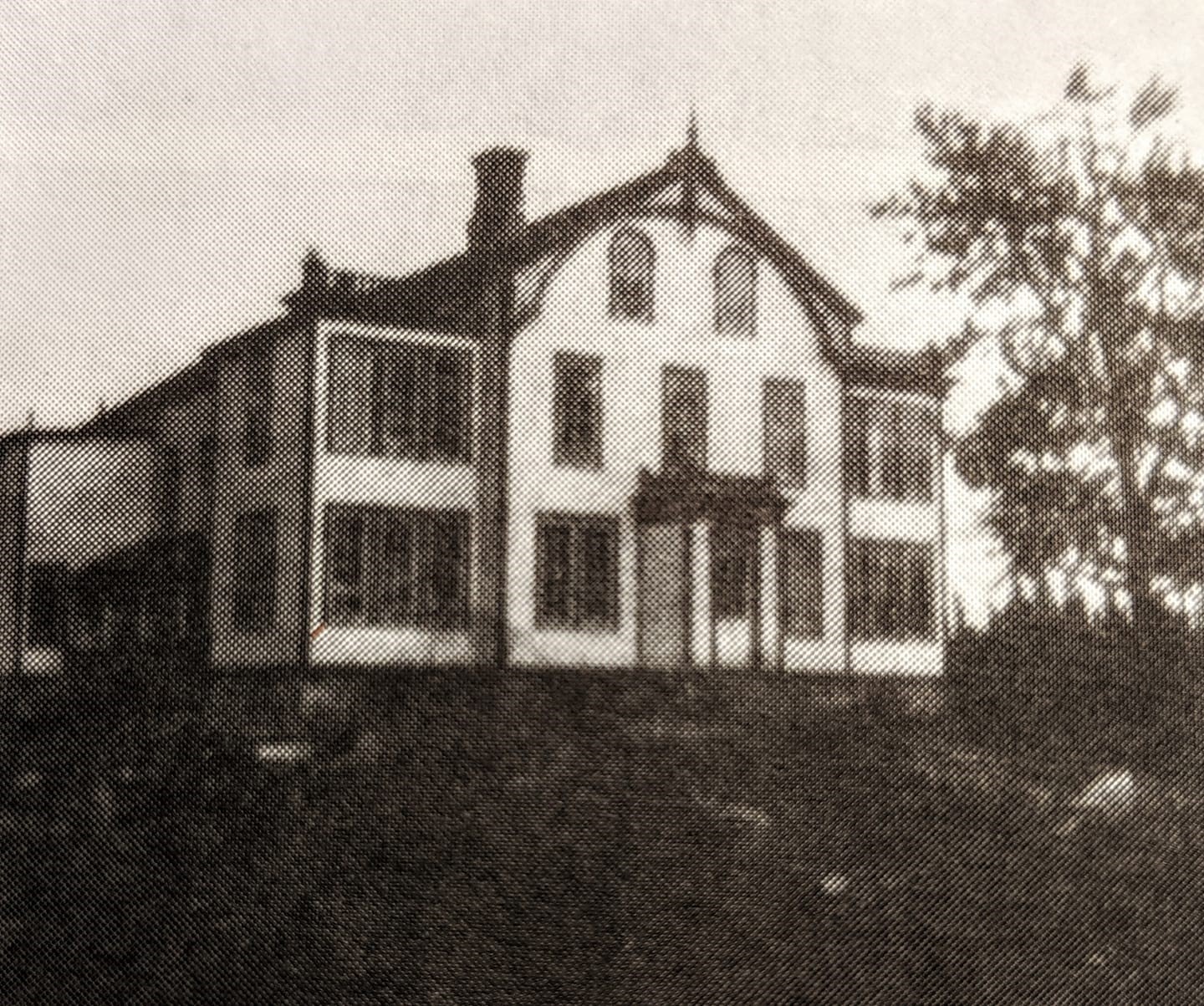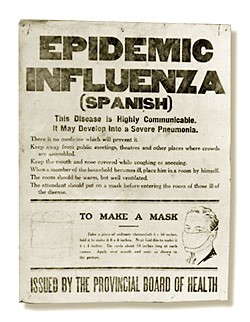The Past: Spanish Flu Hits Nova Scotia
It was 1918 and the Great War had ended. Across the Atlantic seaboard combatants were returning from Europe with a sense that their world had fundamentally changed. It wouldn't take long for them to face the realities of their new world in ways completely unexpected.
It was thought the Spanish Influenza was brought over from Europe (likely not originating in Spain), then to North America via returning soldiers. The first cases in Nova Scotia may have been with the return of the HMCS Aruaya, a military hospital ship that returned from being overseas on July 7, 1918. It was immediately placed in quarantine when it was determined that 175 men were thought to have contracted the virus. Several outbreaks followed, with the first recorded death in the province from the flu occurring on Sept 1, 1918 in the small Cape Breton community of Belle Cote, when 26 year old Marjory MacDonald died, followed by 9 others in the community within the following two weeks.

Hospital ship Araguaya in Halifax Harbour
If there was one province equipped to handle the outbreak it was Nova Scotia. Dealing with various smallpox outbreaks at their ports of entry for centuries, its regulations and practices were considered far more effective than those of other provinces like Ontario. The port communities had quarantine officers or doctors as part of their regular practice, even in the small community of Louisbourg (then Louisburg) NS. Dr, D.A. Morrison oversaw the quarantine of the town at the time that also has a "smallpox hospital" or later referred to "marine hospital" that played a key role in managing viruses. The hospital was erected in 1905 to service shipping traffic as part of their growing industrialization.

Louisburg smallpox and marine hospital
The mayor of Halifax at the time, Arthur Charles Hawkins, a doctor by trade, played an instrumental role at controlling the spread and influenced provincial measures. He saw the effects the Spanish Flu was having in Boston (where 4,000 died) and decided to take action in pursuing the closure of all gathering places across the province for 24 days.
Quarantine resulted in fundamental changes to daily life. All social gatherings stopped in Louisburg, and fifteen houses and the Crowdis Hotel were quarantined as the flu spread. The hospital acted as both a quarantine area and a base of operations for control. Notable deaths recorded over this period from the Spanish Flu included Captain AJ MacNeil who was in charge of the military detachment at the Marconi Station, and Frank Cyril Blanchard, Chief Officer of the steamer Afghan Prince. About a month later public schools reopened and church services resumed.
Although 2,265 were recorded to have died in Nova Scotia, it could have been much worse. 55,000 died in Canada with estimations of 50+ million dying across the world. There was never an effective vaccine produced. In Canada it took government imposed isolation of the population, public notices on best practices, and individuals acting for the betterment of the community to get through this tough time.

Today: COVID-19
We are sharing a similar story today, some 100+ years later. So where are we now opposed to then? Society back then was more aware and perhaps more prepared for these types of outbreaks as they happened, to a smaller extent, more frequently. There was also less of a path of spread, and more of a sense of community.
The best message that carries through from that time is to listen to the provincial and federal governments to get through this. No matter which sources are out there in your social media feed the real experts related to our specific situation are busy informing levels of government with the best information they have. It's time to start thinking less as individuals and more about our families and communities we live in, practicing isolation, and following instructions. We are all in this together. It is unlikely to be 24 days this time, but by flattening the curve we are helping to ensure our health care services can be prepared, and help save lives.
We are 100+ years in the future. We have support systems that were just a dream back then. But the most effective measures haven't changed over this much time. It seems so simple, but between entitlement, political divides and a need for comfort are we just as capable now as we were then? We will get through this and will be most effective if we all take measures and make sacrifices.
Chris Bellemore is a blogger drawn to the stories of Cape Breton. Do you hold a part of the story?
Other articles:
Help support Breton Books: https://capebreton.lokol.me/an-open-letter-to-ron-caplan-of-breton-books
Swordfish in Louisbourg: https://capebreton.lokol.me/what-louisbourg-was-know-for-swordfishing
Cape Breton lobster: https://capebreton.lokol.me/the-lobster-food-for-thought
The WW2 plane on top of Jerome Mountain, Cape Bretonhttps://capebreton.lokol.me/the-ww2-plane-on-top-of-jerome-mountain-cape-breton
The last schooner in Margaree: https://capebreton.lokol.me/the-last-schooner







1
Log In or Sign Up to add a comment.- 1
arrow-eseek-e1 - 1 of 1 itemsFacebook Comments